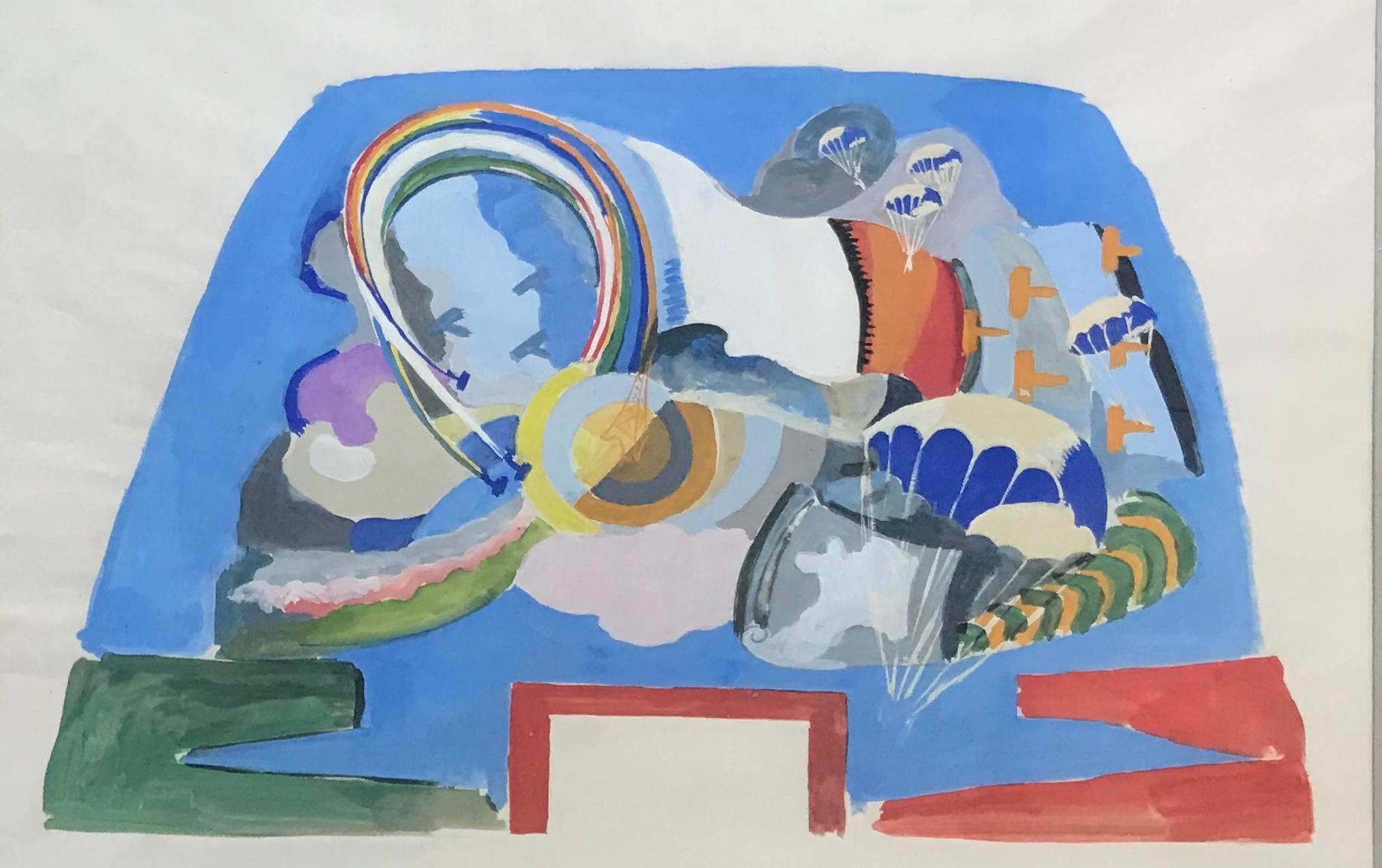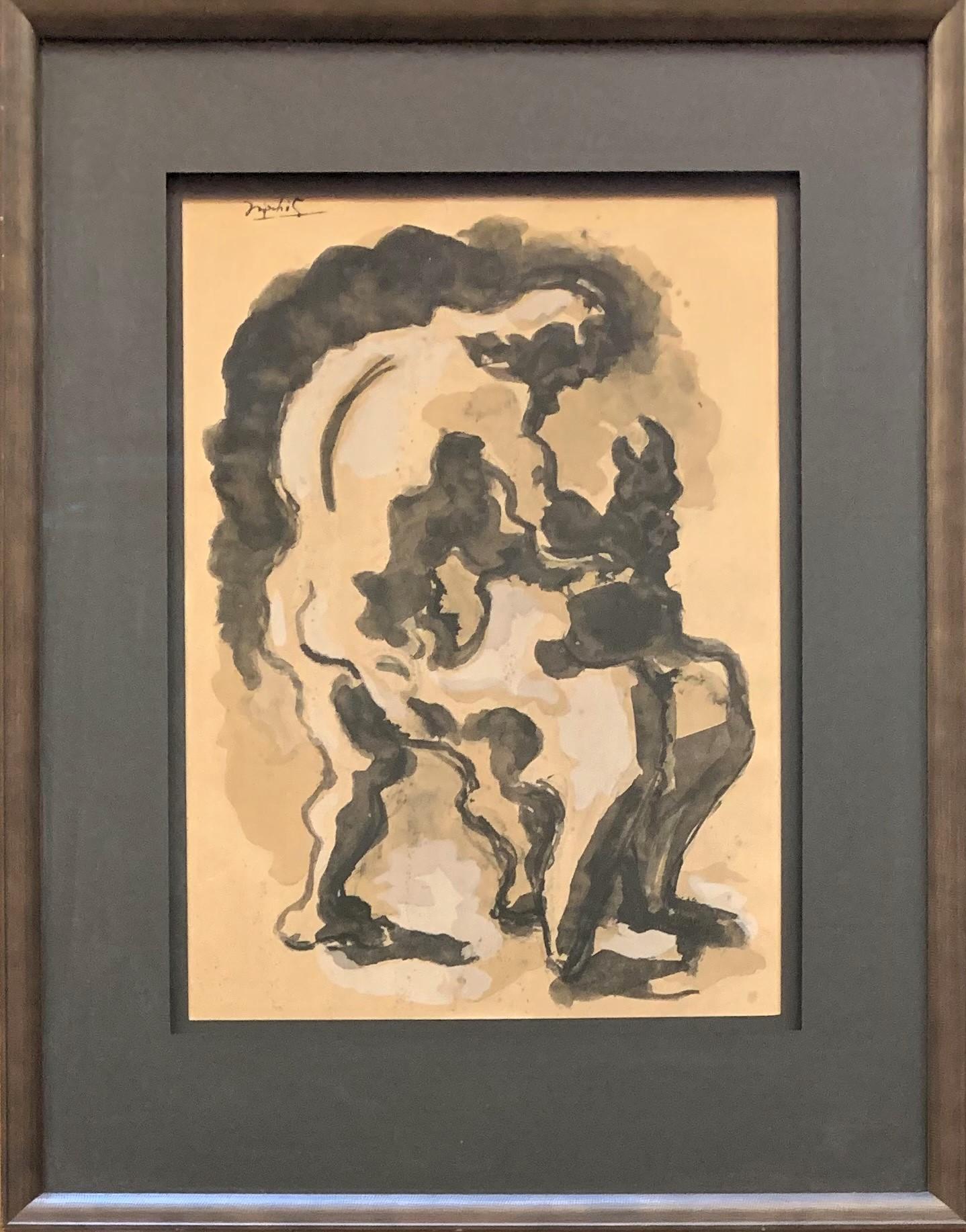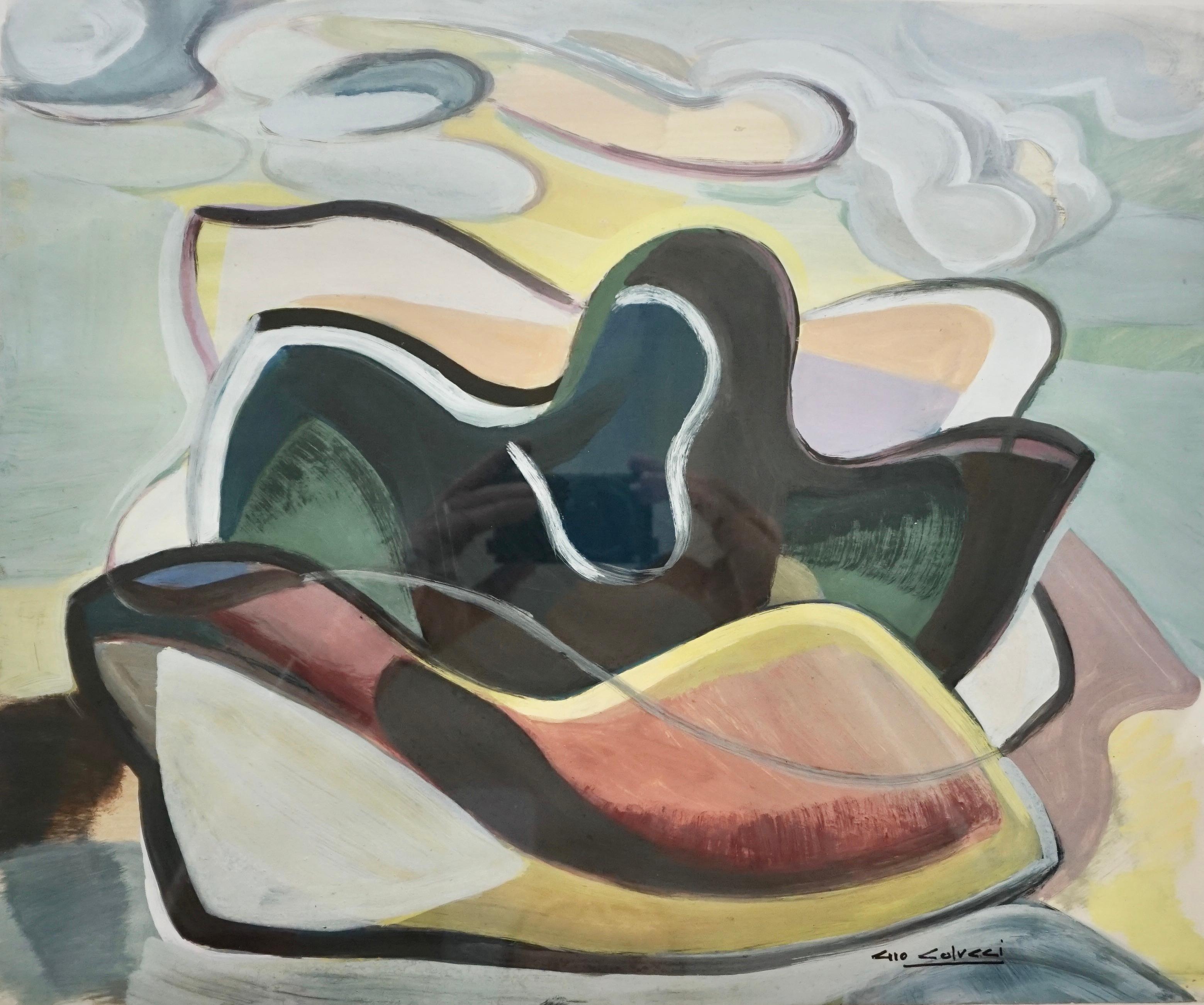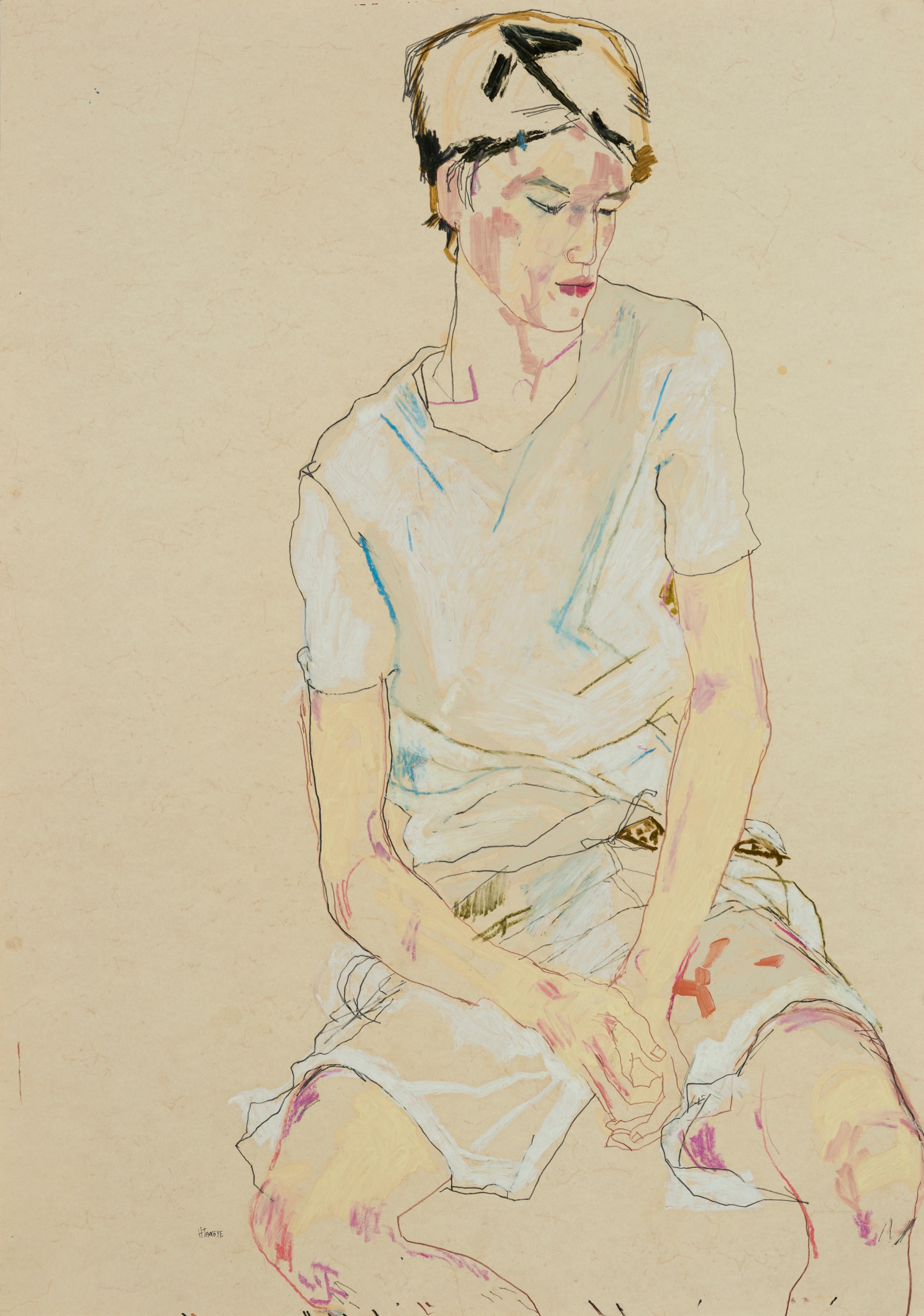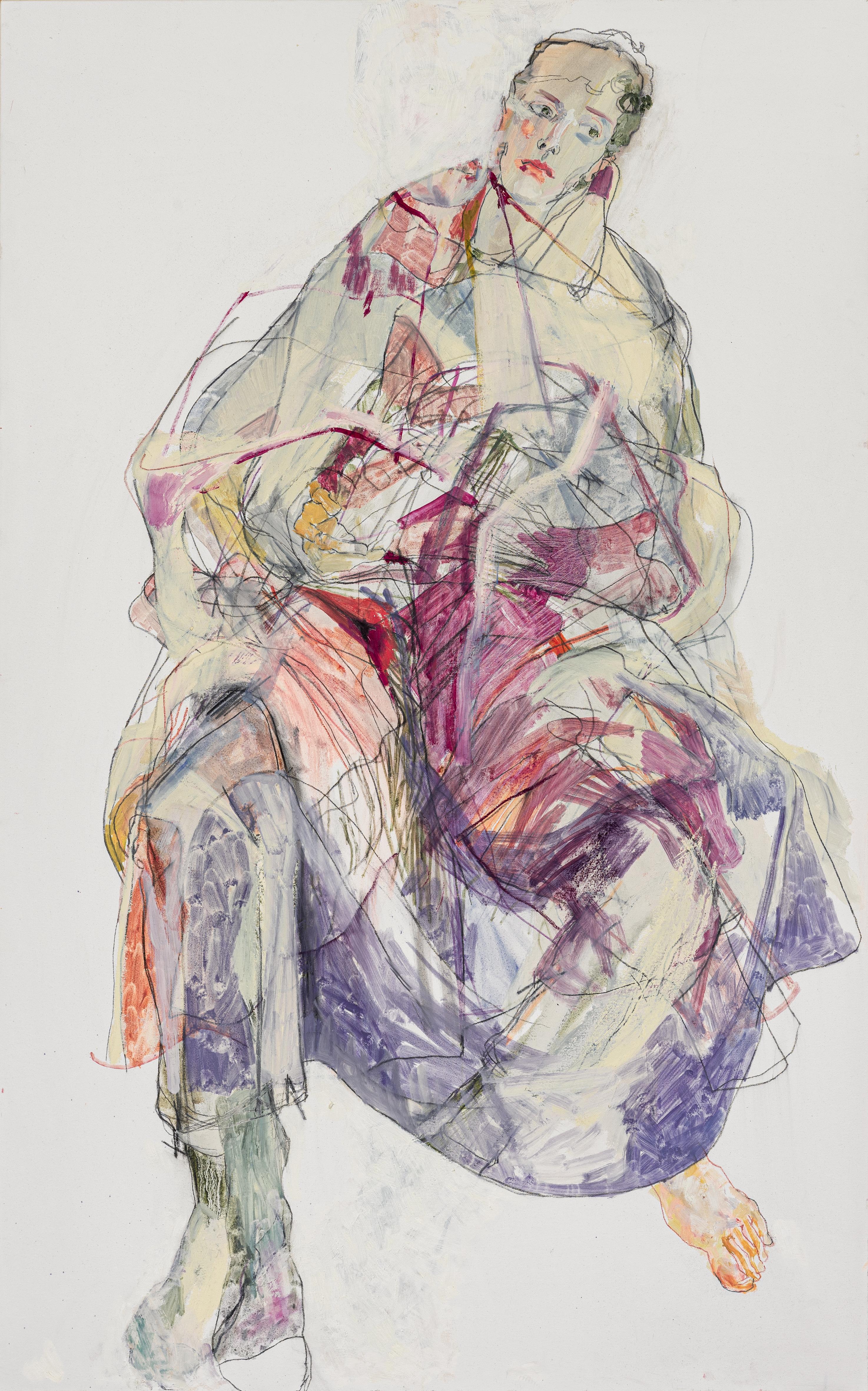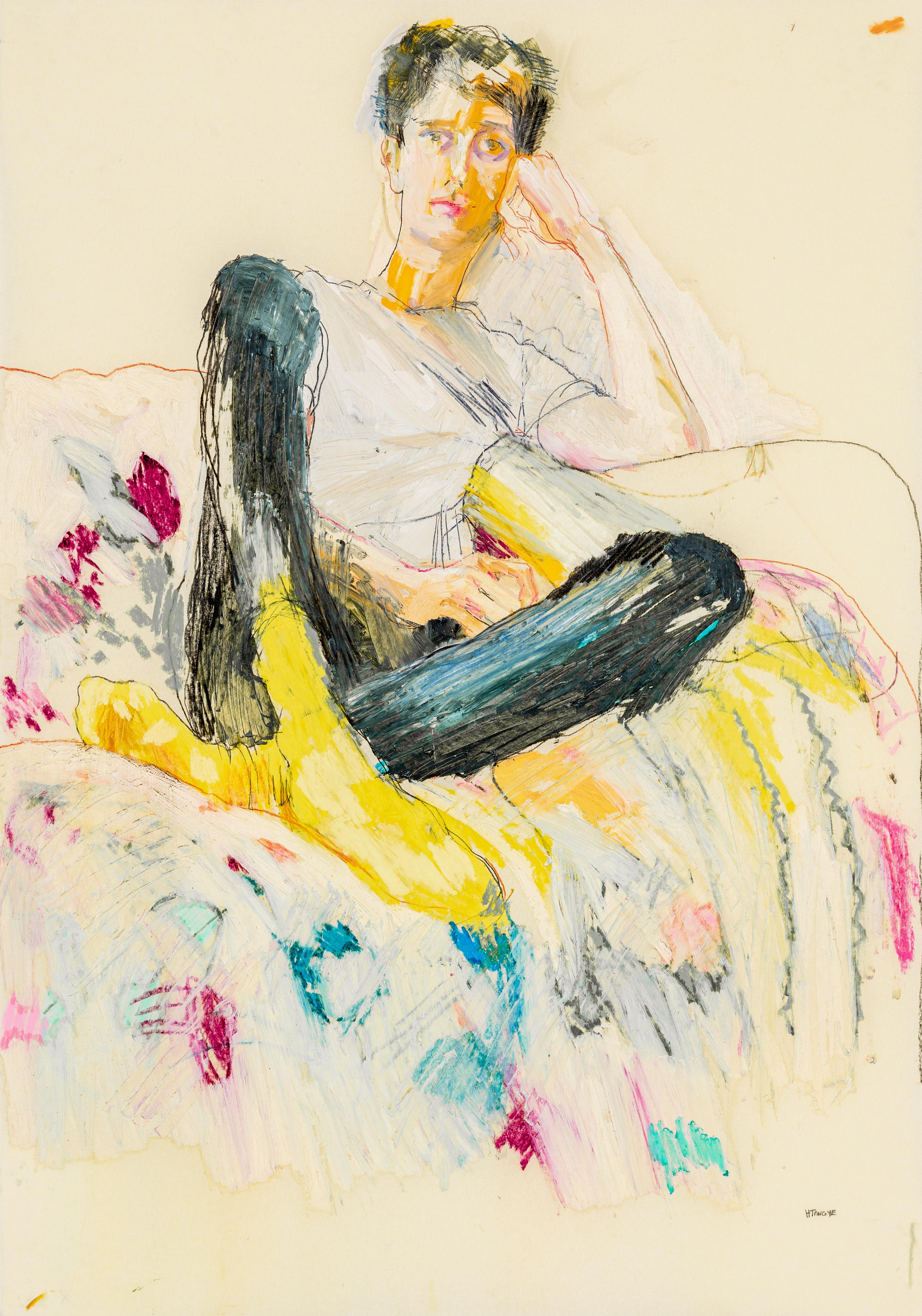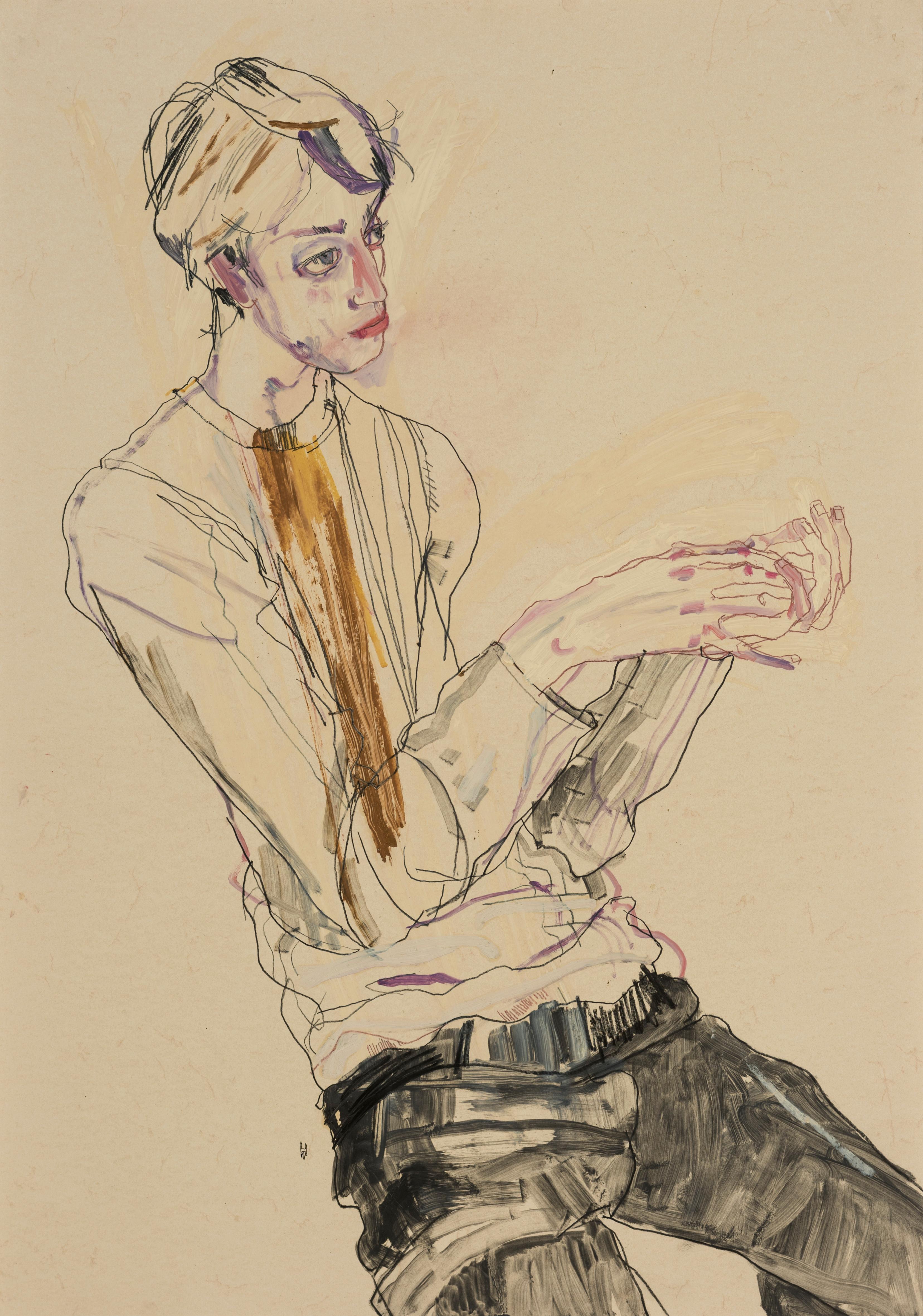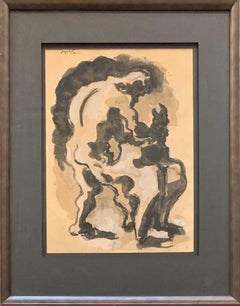Restaurant du Coucou Montmartre Paris
View Similar Items
Want more images or videos?
Request additional images or videos from the seller
1 of 24
Lucien GéninRestaurant du Coucou Montmartre Pariscirca 1930s
circa 1930s
About the Item
- Creator:Lucien Génin (1894 - 1953, French)
- Creation Year:circa 1930s
- Dimensions:Height: 18.12 in (46 cm)Width: 21.26 in (54 cm)
- Medium:
- Period:
- Condition:
- Gallery Location:London, GB
- Reference Number:Seller: 18761stDibs: LU617311323512
About the Seller
5.0
Platinum Seller
These expertly vetted sellers are 1stDibs' most experienced sellers and are rated highest by our customers.
Established in 2016
1stDibs seller since 2017
434 sales on 1stDibs
More From This SellerView All
- 'Chinatown San Francisco at Twilight', French School (circa 1950s)Located in London, GB'Chinatown San Francisco at Twilight', ink and gouache, diptych on card stock, French School (circa 1950s). This artwork was discovered in Paris, France. The unnamed artist skilfully captured that magical moment at dusk when light is at its most beautiful. The scene is Chinatown, San Francisco in the 1950s. The Far East Café, depicted in this artwork was established in 1920. It is the oldest banquet-style Chinese restaurant in the city. Of course, Chinese cuisine in large cities in America has since moved on from the chop suey...Category
Mid-20th Century Landscape Drawings and Watercolors
MaterialsInk, Gouache
$1,067 Sale Price30% Off - Paris la BourseBy Lucien GéninLocated in London, GB'Paris, la Bourse', gouache on paper, by Lucien Génin (circa 1930s). Created at the beginning of the 19th century by Napoleon, la Bourse, or the Stock Exchange, was intended to assert and encourage France’s prosperity in industry and trade. In 1826 the Stock Exchange was installed in the palace that the architect Brongniart had begun in 1808. Surrounded by a large peristyle of Corinthian columns, the rectangular structure reflects the official neo-classicism of the Empire Period. The artist, Génin, depicts a typically lively 1930s day in front of the building with cars of the period zooming by pedestrians on the walkway and others on the stairs leading to the entrance. He has an extremely charming, almost childlike style particularly the way he renders the people and the vehicles. The building, on the other hand, is accurate in its detail and more seriously presented. Our gallery has held and has sold over a dozen of Genin's paintings but this one stands out for its pure stylish appeal and ability to captivate while inducing a smile in the viewer. The artwork is in good overall condition - there are some minor blemishes not on the artwork itself but on the edges of the mount to which it is attached. The frame is in fair condition showing some nicks and scratches. Please enjoy the many photos accompanying the listing. Upon request a video can be provided. Signed by the artist in the lower right hand. About the Artist: After the devastation of the First World War, Lucien Génin (1894 - 1953) left his provincial home in the autumn of 1919 to find his fortune among the lively Parisians in the heart of Montmartre. Génin befriended the painters Frank Will, Gen Paul, Émile Boyer...Category
1930s Figurative Paintings
MaterialsGouache
$2,134 Sale Price30% Off - 'Cabaret in an Asian Banquet Hall', French SchoolLocated in London, GB'Cabaret in an Asian Banquet Hall', pencil, gouache and metallic paint on card stock by an unnamed artist of the French School (20th Century). This is a fantastical port visit of the artist's imagination. It is a naive, but strangely compelling painting discovered in Paris. It depicts French sailors dancing with a cabaret performer in a Chinese-style banquet hall while onlookers enjoy the spectacle. On the left hand of the scene an Asian musician...Category
20th Century Figurative Drawings and Watercolors
MaterialsGouache, Pencil
$609 Sale Price20% Off - Café de la PlaceBy Raymond DebieveLocated in London, GB'Café de la Place', gouache on paper, by Raymond Debiève (circa 1970s). A solitary stroller in a small French town crosses the street in front of a café al...Category
1970s Modern Figurative Paintings
MaterialsPaper, Gouache
$2,236 Sale Price20% Off - 'International Bar', French SchoolLocated in London, GB'International Bar, pencil, ink and gouache on card stock by an unnamed artist of the French School (20th Century). This appears to be a fantastical port visit of the artist's imagination. It is very lively in colour and in subject. The artwork was discovered in Paris along with several others of the same character, most likely by the same person. It depicts the entryway of a brightly lit Asian bar...Category
20th Century Figurative Drawings and Watercolors
MaterialsInk, Gouache, Pencil
$622 Sale Price30% Off - 'Cherry Blossoms in Japan', French SchoolLocated in London, GB'Cherry Blossoms in Japan', pencil, ink and gouache on card stock, French School (Mid 20th Century). Cherry blossoms (Sakura) symbolise springtime, a time of renewal and the fleeting...Category
Mid-20th Century Figurative Drawings and Watercolors
MaterialsInk, Gouache, Pencil
$622 Sale Price30% Off
You May Also Like
- Study fot he tronconic hall of the Air Palace, 1937. Gouache on paper.Located in Paris, FRStudy fot he tronconic hall of the Air Palace, 1937. Gouache on paper. This is a study most this artist's most important artistic work. Son of the painter Albert Aublet, Felix enrol...Category
1930s Cubist Figurative Paintings
MaterialsGouache
- Jacques Lipchitz - Prometheus, Original Gouache PaintingBy Jacques LipchitzLocated in Saint Augustine, FLLipchitz’s reputation for being a painterly Cubist sculptor is understood through his semi-abstract paintings like “Prometheus”. His use of monochrome gouache to create distorted figures from the negative spaces is distinctive. Jacques Lipchitz was a celebrated Lithuanian-born French sculptor best known for his Cubist works...Category
1920s Cubist Figurative Paintings
MaterialsGouache
- Prometheus Conquering the Vulture, Gouache Painting, Modern & Cubist 1938By Jacques LipchitzLocated in Saint Augustine, FLArtist: Jacques Lipchitz (1891-1973, French) Title: Prometheus & the Vulture Medium: Gouache & Pencil on Paper Movement: Modern, Cubist Year of Work: Circa 1938 Signature: Top Left ...Category
1930s Modern Figurative Paintings
MaterialsPaper, Gouache, Pencil
- Abstract Forms/SkyBy Gio ColucciLocated in Berlin, MDGio Colucci (Italian 1892-1974) Untitled: Abstract Forms/Sky. Gouache on paper laid down on matt board. Archival framing under glass. Circa 1930's - 40's? Signed lower right. This...Category
Early 20th Century Abstract Expressionist Figurative Paintings
MaterialsGouache, Laid Paper
- Untitled: Abstract Figure and LeavesBy Gio ColucciLocated in Berlin, MDGio Colucci (Italian 1892-1974) Untitled: Abstract Figure and Leaves. Gouache on paper laid down on matt board. Archival framing under glass. Originally from the Con-Agra Corporat...Category
Early 20th Century Abstract Figurative Paintings
MaterialsGouache, Laid Paper
- The Abduction of the Sabine Women , a Renaissance drawing by Biagio PupiniLocated in PARIS, FRThis vigorous drawing has long been attributed to Polidoro da Caravaggio: The Abduction of the Sabine Women is one of the scenes that Polidoro depicted between 1525 and 1527 on the façade of the Milesi Palazzo in Rome. However, the proximity to another drawing inspired by this same façade, kept at the Ecole des Beaux-Arts, and to other drawings inspired by Polidoro kept at the Musée du Louvre, leads us to propose an attribution to Biagio Pupini, a Bolognese artist whose life remains barely known, despite the abundant number of drawings attributed to him. 1. Biagio Pupini, a Bolognese artist in the light of the Roman Renaissance The early life of Biagio Pupini, an important figure of the first half of the Cinquecento in Bologna - Vasari mentions him several times - is still poorly known. Neither his date of birth (probably around 1490-1495) nor his training are known. He is said to have been a pupil of Francesco Francia (1450 - 1517) and his name appears for the first time in 1511 in a contract with the painter Bagnacavallo (c. 1484 - 1542) for the frescoes of a church in Faenza. He then collaborated with Girolamo da Carpi, at San Michele in Bosco and at the villa of Belriguardo. He must have gone to Rome for the first time with Bagnacavallo between 1511 and 1519. There he discovered the art of Raphael, with whom he might have worked, and that of Polidoro da Caravaggio. This first visit, and those that followed, were the occasion for an intense study of ancient and modern art, as illustrated by his abundant graphic production. Polidoro da Caravaggio had a particular influence on the technique adopted by Pupini. Executed on coloured paper, his drawings generally combine pen, brown ink and wash with abundant highlights of white gouache, as in the drawing presented here. 2. The Abduction of the Sabine Women Our drawing is an adaptation of a fresco painted between 1525 and 1527 by Polidoro da Caravaggio on the façade of the Milesi Palace in Rome. These painted façades were very famous from the moment they were painted and inspired many artists during their stay in Rome. These frescoes are now very deteriorated and difficult to see, as the palace is in a rather narrow street. The episode of the abduction of the Sabine women (which appears in the centre of the photo above) is a historical theme that goes back to the origins of Rome and is recounted both by Titus Livius (Ab Urbe condita I,13), by Ovid (Fasti III, 199-228) and by Plutarch (II, Romulus 14-19). After killing his twin brother Romus, Romulus populates the city of Rome by opening it up to refugees and brigands and finds himself with an excess of men. Because of their reputation, none of the inhabitants of the neighbouring cities want to give them their daughters in marriage. The Romans then decide to invite their Sabine neighbours to a great feast during which they slaughter the Sabines and kidnap their daughters. The engraving made by Giovanni Battista Gallestruzzi (1618 - 1677) around 1656-1658 gives us a good understanding of the Polidoro fresco, allowing us to see how Biagio Pupini reworked the scene to extract this dynamic group. With a remarkable economy of means, Biagio Pupini takes over the left-hand side of the fresco and depicts in a very dense space two main groups, each consisting of a Roman and a Sabine, completed by a group of three soldiers in the background (which seems to differ quite significantly from Polidoro's composition). The balance of the drawing is based on a very strongly structured composition. The drawing is organised around a median vertical axis, which runs along both the elbow of the kidnapped Sabine on the left and the foot of her captor, and the two main diagonals, reinforced by four secondary diagonals. This diamond-shaped structure creates an extremely dynamic space, in which centripetal movements (the legs of the Sabine on the right, the arm of the soldier on the back at the top right) and centrifugal movements (the arm of the kidnapper on the left and the legs of the Sabine he is carrying away, the arm of the Sabine on the right) oppose each other, giving the drawing the appearance of a whirlpool around a central point of support situated slightly to the left of the navel of the kidnapper on the right. 3. Polidoro da Caravaggio, and the decorations of Roman palaces Polidoro da Caravaggio was a paradoxical artist who entered Raphael's (1483 - 1520) workshop at a very young age, when he oversaw the Lodges in the Vatican. Most of his Roman work, which was the peak of his career, has disappeared, as he specialised in facade painting, and yet these paintings, which are eminently visible in urban spaces, have influenced generations of artists who copied them abundantly during their visits to Rome. Polidoro Caldara was born in Caravaggio around 1495-1500 (the birthplace of Michelangelo Merisi, known as Caravaggio, who was born there in 1571), some forty kilometres east of Milan. According to Vasari, he arrived as a mason on the Vatican's construction site and joined Raphael's workshop around 1517 (at the age of eighteen according to Vasari). This integration would have allowed Polidoro to work not only on the frescoes of the Lodges, but also on some of the frescoes of the Chambers, as well as on the flat of Cardinal Bibiena in the Vatican. After Raphael's death in 1520, Polidoro worked first with Perin del Vaga before joining forces with Maturino of Florence (1490 - 1528), whom he had also known in Raphael's workshop. Together they specialised in the painting of palace façades. They were to produce some forty façades decorated with grisaille paintings imitating antique bas-reliefs. The Sack of Rome in 1527, during which his friend Maturino was killed, led Polidoro to flee first to Naples (where he had already stayed in 1523), then to Messina. It was while he was preparing his return to the peninsula that he was murdered by one of his assistants, Tonno Calabrese, in 1543. In his Vite, Vasari celebrated Polidoro as the greatest façade decorator of his time, noting that "there is no flat, palace, garden or villa in Rome that does not contain a work by Polidoro". Polidoro's facade decorations, most of which have disappeared as they were displayed in the open air, constitute the most important lost chapter of Roman art of the Cinquecento. The few surviving drawings of the painter can, however, give an idea of the original appearance of his murals and show that he was an artist of remarkable and highly original genius. 4. The façade of the Milesi Palace Giovanni Antonio Milesi, who commissioned this palace, located not far from the Tiber, north of Piazza Navona, was a native of the Bergamo area, like Polidoro, with whom he maintained close friendly ties. Executed in the last years before the Sack of Rome, around 1526-1527, the decoration of Palazzo Milesi is considered Polidoro's greatest decorative success. An engraving by Ernesto Maccari made at the end of the nineteenth century allows us to understand the general balance of this façade, which was still well preserved at the time. The frescoes were not entirely monochrome, but alternated elements in chiaroscuro simulating marble bas-reliefs and those in ochre simulating bronze and gold vases...Category
16th Century Old Masters Figurative Drawings and Watercolors
MaterialsInk, Gouache, Pen
Recently Viewed
View AllMore Ways To Browse
Vintage World Paris
Paris Art Building
Restaurant Art
Vintage Love Paris
I Love Paris
Restaurant Painting
Restaurant Sign Sign
Restaurant Signs
Montmartre Paris
Restaurant H
Restaurant Italy
Montmartre Painting
Paris Painting Montmartre
Paris Boulevard
Boyer Paris
Montmartre Vintage
Vintage Children Artwork
Paris Restaurants
